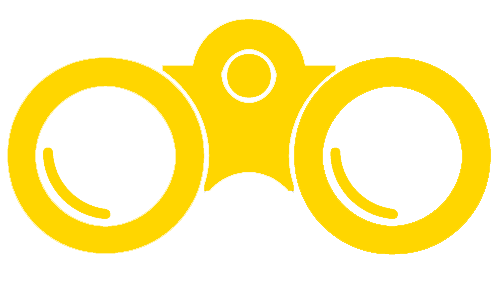
The following list shows the chapter-level topics and assignments for the course. To see all of the course pages, visit the Table of Contents.
Module 1: Body Plan and Organization
- An Introduction to the Human Body
- Overview of Anatomy and Physiology
- Structural Organization of the Human Body
- Functions of Human Life
- Requirements for Human Life
- Anatomical Terminology
- Anatomical Location
- Medical Imaging
- Anatomy Pronunciation Guide
Module 2: Homeostasis
- Homeostasis
- Homeostasis and Feedback Loops
- Homeostasis Terminology
- Feedback Loops
- Homeostatic Maintenance
- Diabetes: Type 1 and Type 2
- Integration of Systems
Module 3: The Chemical Level of Organization
- Introduction to the Chemical Level of Organization
- Chemistry
- Elements and Atoms: The Building Blocks of Matter
- Chemical Bonds
- Chemical Reactions
- Inorganic Compounds Essential to Human Functioning
- Organic Compounds Essential to Human Functioning
Module 4: The Cellular Level of Organization
- Introduction to the Cellular Level of Organization
- The Cell Membrane
- The Cytoplasm and Cellular Organelles
- The Nucleus and DNA Replication
- Protein Synthesis
- Cell Growth and Division
- Cellular Differentiation
Module 5: The Tissue Level of Organization
- Introduction to the Tissue Level of Organization
- Types of Tissues
- Epithelial Tissue
- Connective Tissue Supports and Protects
- Muscle Tissue and Motion
- Nervous Tissue Mediates Perception and Response
- Tissue Injury and Aging
Module 6: The Integumentary System
- Introduction to the Integumentary System
- Layers of the Skin
- Accessory Structures of the Skin
- Functions of the Integumentary System
- Diseases, Disorders, and Injuries
- Slides of the Integumentary System
- Integumentary System Tutorial
Module 7: Bone Tissue and The Skeletal System
- Introduction to Bone Tissue and the Skeletal System
- The Functions of the Skeletal System
- Bone Classification
- Bone Structure
- Bone Formation and Development
- Fractures: Bone Repair
- Exercise, Nutrition, Hormones, and Bone Tissue
- Calcium Homeostasis: Interactions of the Skeletal System and Other Organ Systems
Module 8: Axial Skeleton
- Introduction to the Axial Skeleton
- Divisions of the Skeletal System
- The Skull
- The Vertebral Column
- The Thoracic Cage
- Embryonic Development of the Axial Skeleton
Module 9: The Appendicular Skeleton
- Introduction to the Appendicular Skeleton
- The Pectoral Girdle
- Bones of the Upper Limb
- The Pelvic Girdle and Pelvis
- Bones of the Lower Limb
- Development of the Appendicular Skeleton
Module 10: Joints
- Introduction to Joints
- Classification of Joints
- Fibrous Joints
- Cartilaginous Joints
- Synovial Joints
- Types of Body Movements
- Anatomy of Selected Synovial Joints
- Video Tutorials: Synovial Joints
- Development of Joints
- Articular System Review Games
Module 11: Muscle Tissue
- Introduction to Muscle Tissue
- Types of Muscle Tissues
- Skeletal Muscle
- Muscle Fiber Contraction and Relaxation
- Nervous System Control of Muscle Tension
- Types of Muscle Fibers
- Exercise and Muscle Performance
- Cardiac Muscle Tissue
- Smooth Muscle
- Development and Regeneration of Muscle Tissue
Module 12: The Muscular System
- Introduction to the Muscular System
- Interactions of Skeletal Muscles
- Naming Skeletal Muscles
- Axial Muscles of the Head, Neck, and Back
- Axial Muscles of the Abdominal Wall and Thorax
- Muscles of the Pectoral Girdle and Upper Limbs
- Appendicular Muscles of the Pelvic Girdle and Lower Limbs
- Slides of Muscles
Module 13: The Nervous System
- Introduction to the Nervous System
- The Embryologic Perspective
- The Central Nervous System
- Circulation and the Central Nervous System
- The Peripheral Nervous System
Module 14: The Nervous System and Nervous Tissue
- Introduction to the Nervous System and Nervous Tissue
- Basic Structure and Function of the Nervous System
- Nervous Tissue
- The Function of Nervous Tissue
- The Action Potential
- Communication Between Neurons
Module 15: The Autonomic Nervous System
- Introduction to the Autonomic Nervous System
- Divisions of the Autonomic Nervous System
- Autonomic Reflexes and Homeostasis
- Central Control
- Drugs that Affect the Autonomic System
Module 16: The Brain and Cranial Nerves
- Introduction to the Brain and Cranial Nerves
- Sensory Perception: Taste and Olfaction
- Audition and Somatosensation
- Vision
- Central Processing
- Motor Responses